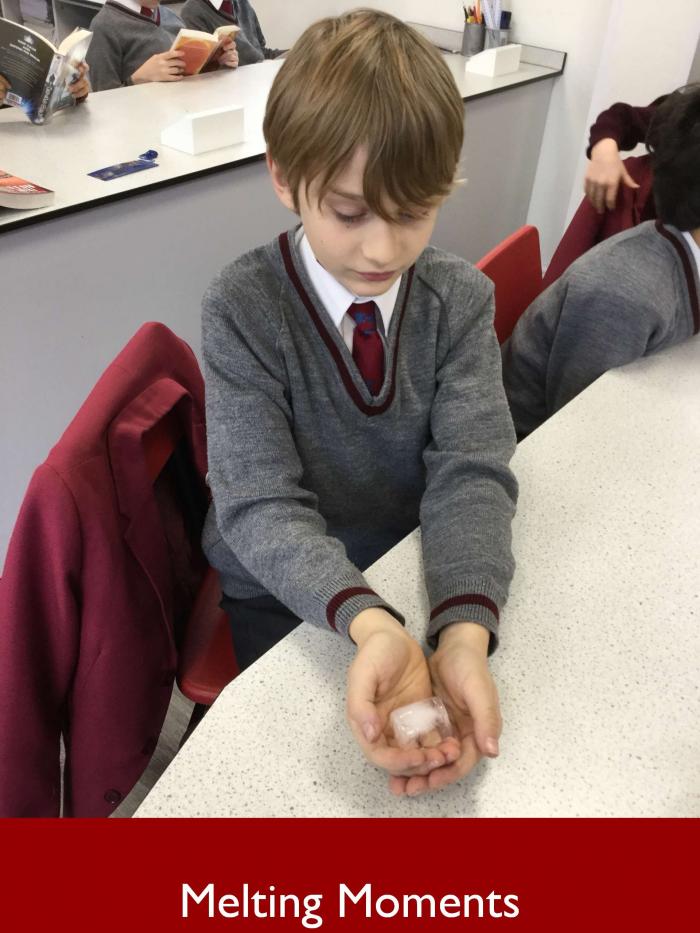






Melting Moments
You have to suffer for your science at Eversfield! The other day, Mrs Sliney made 4SS pick up ice cubes and hold them in their palms until they melted. It was a very uncomfortable and wet experience, I can tell you!
The children in Form 4 have been learning about states of matter this half term, exploring the properties of solids, liquids and gases. Recently, they investigated the factors that make some liquids runnier than others. In this lesson, it was time to turn their attention to ice. Everyone knows that ice is formed when water freezes and that, when the temperature rises, it melts again, but Mrs Sliney intended to take the children far beyond this basic concept. She wanted them to think about the process in terms of particles, building on their previous learning about the arrangement of particles in the three states of matter.
Being a particle in a lump of solid matter can’t be much fun, can it? You are tightly compressed and have very little energy. To illustrate this, the children were invited to imagine themselves as particles of ice, hugging together closely without much space to move around. Mrs Sliney then informed 4SS she was heating them up. Heat, of course, is energy, so at once the pupils began to jiggle around furiously. As the heat intensified, a few adventurous particles even managed to escape the pack. They were just like the water that formed in the palms of their hands as their body heat caused the ice to melt. Keep on heating, keep on jiggling and, before you know where you are, you’ll end up with a gas…and a class of children completely out of control!
With the basic principle of the lesson established, Mrs Sliney was keen to move the children’s thinking on further. Would butter behave in the same way as melting ice, she wondered? After all, butter can be as hard as a rock and impossible to spread if you keep your fridge too cold, yet you can also melt it when, for instance, you want to sauté potatoes. Mrs Sliney explained that every solid material has its own melting point, and some solids do not melt unless they are heated to extremely high temperatures. To emphasise her point, the children watched a video clip of a copper owl being liquefied at a temperature of 1085°C. 4SS thought this was amazing. Of course, we are used to seeing matter in its typical state at room temperature, be that as a solid, liquid or gas.
What accounts for these differences? Why is it so much harder to melt copper than butter or ice? Again, Mrs Sliney told the children to consider the question from the point of view of a particle. Particles are held in their solid state by bonds. Some solids, such as copper, have stronger bonds than others. The particles in copper, she explained, are held together by bonds that even the World’s Strongest Man would struggle to break. Mere weaklings, however, could break the bonds holding together the particles of ice. One Form 4 child then staggered Mrs Sliney by querying whether this could be as a result of what he described as inter-molecular forces, which of course it most certainly could!
Sadly, Mrs Sliney’s lesson ended at that point but, in closing, she produced a pack of Haribos from her desk drawer, asking the children whether they thought these jelly sweets would also have a melting point. The children left the science lab counting the hours until their next lesson, and even suggesting that an extra lesson might be scheduled solely for the purpose of conducting this test. Mrs Sliney was delighted by this reaction, although she couldn’t help wondering whether the thought of eating any spare Haribos might have had something to do with their enthusiasm!